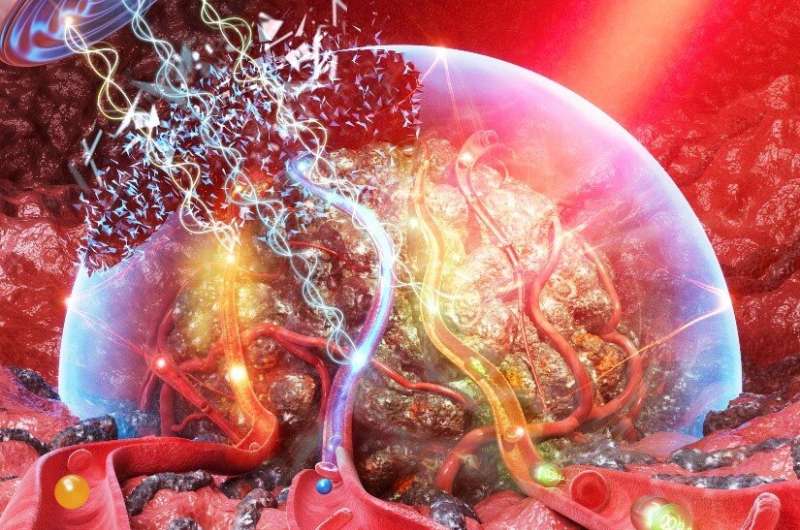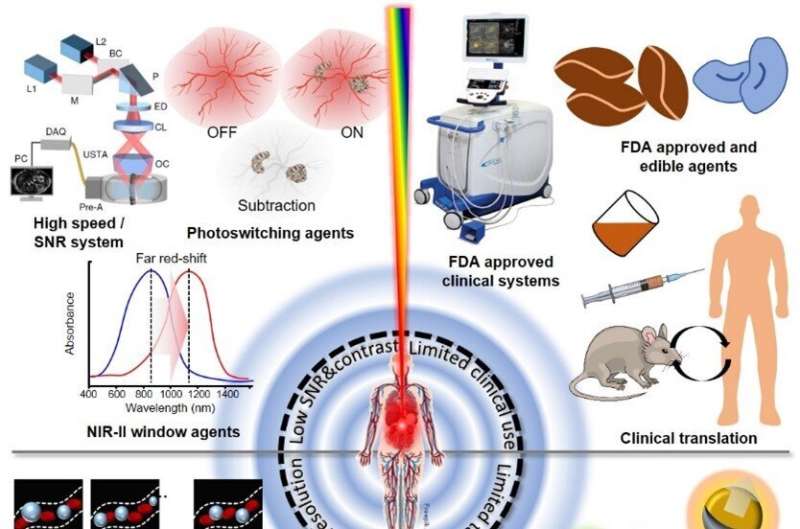
A research team at POSTECH led by Professor Chulhong Kim (Department of Electrical Engineering, Department of Convergence IT Engineering, and Department of Mechanical Engineering) has compiled the findings from innovative research on contrast-enhanced photoacoustic imaging conducted over the last four years. These findings were recently featured in Chemical Reviews.
For decades, the scientific community has been investigating the potential of photoacoustic imaging as a biomedical imaging modality. However, despite its enhanced optical contrast and ultrasonic spatiotemporal resolution, photoacoustic imaging faces physical limitations such as low signal-to-noise ratio (SNR), decreased image contrast due to strong optical attenuation, and lower bound on spatial resolution when imaging deep tissues.
In addition to these challenges, contrast-enhanced photoacoustic imaging encounters practical hurdles such as a lack of effective cell-specific targeting due to low delivery efficiency and difficulties in developing clinically translatable agents.
It is imperative to identify the limitations of conventional photoacoustic imaging in order to facilitate the advancement of this field. This can be achieved through the development of contrast-enhancing agents, which should be accompanied by high-performance image acquisition systems to address the challenges inherent to photoacoustic imaging.

In this review, the research team surveys the latest four years of research into overcoming the physical and practical challenges of photoacoustic imaging, with respect to SNR/contrast, spatial resolution, targeted delivery, and clinical application.
Furthermore, the team provides a detailed analysis of promising strategies for addressing each challenge, such as photoswitching agents, near-infrared-II agents, super-resolution localization agents, or micromotor agents. To encourage further developments in this framework, the team offers suggestions for future research directions that can potentially enable next-generation contrast-enhanced photoacoustic imaging.
More information:
Wonseok Choi et al, Recent Advances in Contrast-Enhanced Photoacoustic Imaging: Overcoming the Physical and Practical Challenges, Chemical Reviews (2023). DOI: 10.1021/acs.chemrev.2c00627
Journal information:
Chemical Reviews
Source: Read Full Article
